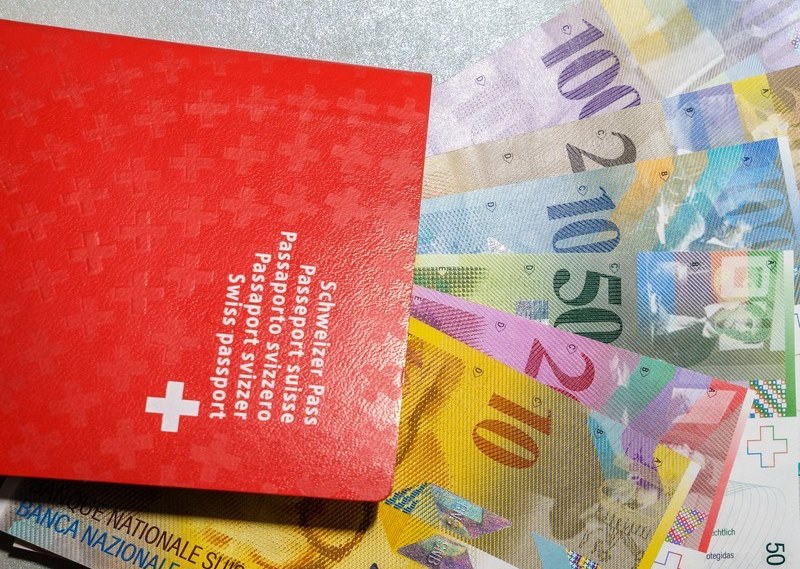In order to double its share of the global trade in liquefied natural gas (LNG) to 10 percent by 2020, Russia has accepted amendments to the law on gas exports that cancel Gazprom’s gas export monopoly. The country plans to benefit from an expected growth by one third in LNG trade within the next five years with Japan’s move away from nuclear power and China’s attempts to curb the use of coal. However, the liberalization of the export is limited to two types of companies:
1) Companies, which operate on fields under a licence, which as of January 1, 2014 provides for a liquefying plant to be built or the liquefaction of the extracted gas.
2) State-owned companies (and their subsidiaries) controlled by the Russian state by more than 50%, which operate on fields located within the internal sea waters, territorial sea waters and the continental shelf (including the Black Sea and the Sea of Azov), that make LNG from natural gas extracted from these fields, not excluding the natural gas extracted as part of production sharing agreements.
Gazprom’s monopoly on pipeline gas exports is not affected by the changes in law. Furthermore, licences issued by the Ministry of Energy have to be obtained for all exports. So, most likely the ban on LNG exports to European countries that already buy Russian conventional gas will also remain.
As of December 1, 2013, when the law came into force, along with Gazprom Novatek, Rosneft and Zarubezhneft are allowed to export LNG.
At present time there is only one LNG plant operating in Russia, the Sakhalin-2 project. The plant was built for Shell in 2003-2009 by OAO Nipigaspererabotka and KhimEnergo consortium, together with the two Japanese companies Chiyoda Corporation and Toyo Engineering Corporation. Shell developed an energy-saving process for sub-Arctic conditions that takes advantage of the low surrounding temperatures to cool the gas and turn it into liquid. Several years ago Gazprom acquired a controlling stock (Current ownership: Shell 27.5%, Gazprom 50%, Mitsui 12.5%, Mitsubishi 10%). Sakhalin-2 is one of the world’s largest integrated, export-oriented oil and gas projects and Russia’s first offshore gas project. In 2012, Sakhalin-2 added 4.5% to the world’s liquefied natural gas capacity. It meets almost 9.5% of Japan’s gas needs and 6% of South Korea’s. In 2012 it exceeded its annual design output by producing 10.9 million tons of LNG.
The LNG plant includes: • two 100,000 cubic metres (3,500,000 cu ft) LNG storage tanks • LNG jetty • two LNG processing trains, each with capacity of 4.8 million tons of LNG per year • two refrigerant storage spheres, 1,600 cubic metres (57,000 cu ft) each (gross capacity) for propane and ethane storage • diesel fuel system • heat transfer fluid system for the supply of heat to various process consumers • five gas turbine-driven generators with a total capacity of around 129 MW electrical power • utility systems including instrument air and nitrogen plants and diesel fuel systems • waste water treatment plant to treat both sewage water and coil-containing water
Currently, Gazprom is looking to add 5 million t/year capacity to its 9.6 million t/year LNG plant by building a third train. Construction of the third train could cost $5-7 billion and the facility could be brought online in 2017-18.
Yamal LNG is a project developed by OAO “Yamal SPG”, a JV of OAO Novatek (80%) and Total (20%). Currently it is on the FEED stage (front end engineering and design) of predevelopment. Based on current assessment of the available reserves, the project is expected to achieve constant production of 16.5 million tons liquefied natural gas a year for about 20 years.
Planned facilities of the project include: • LNG plant (for the liquefaction of natural gas) including 3 process trains • 380MW power plant • LNG and condensate storage tanks • airport
• aerial electrical transmission lines, workshops, waste management facilities and workers’ facilities • workers’ accommodation and auxiliary infrastructure facilities; • seaport including: early seaport facilities consisting of a materials offloading facility (MOF)/berth for the delivery of equipment, heavy plant and construction materials during construction phase, main seaport facilities for the shipment of LNG and gas condensate during operations.
• fleet of diesel-powered double-hulled LNG carriers and condensate tankers for year round operation in the Eastern Barents and Kara Seas as well as in the Gulf of Ob and summer navigation along the Northern Sea Route.
Rosneft and ExxonMobile are to build an LNG plant on Sakhalin Island in the Russian Far East with an estimated budget of 6.5-8 billion USD. Different places have been considered for its location: the Sakhalin Island, Russian mainland, close to De Kastri in the Khaborovsk region in front of the Sakhalin Island, to name a few. The capacity of this project is expected to be 5 million tons per year, with the option of further expansion. The liquefaction plant, the launch of which is scheduled for 2018, will receive natural gas from Rosneft’s reserves in the Far East and other Sakhalin gas reserves. In 2013-2014 Rosneft and ExxonMobil plan to complete design work, including selection of a liquefaction technology and identification of major equipment requirements, to perform engineering surveys, develop FEED and Russian project documentation for the LNG plant, hydro-technical marine facilities and a source gas pipeline, as well as perform EIA. The engineering companies CB&I and Foster Wheeler Energy from USA were awarded contracts to perform the first phase (pre-FEED). The start of the construction work is scheduled for 2015.
In February 2013 Gazprom decided to invest in the Vladivostok LNG, a plant that would liquefy gas from fields in East Siberia at a new plant at the Pacific port with a capacity of 10-15 million tons per year. The investment value is estimated at 13.5 billion USD. The company is currently developing design documentation, which should be completed in the third quarter 2014. According to an industry source, Gazprom has chosen Worley Parsons as contractor for the initial front-end engineering and design for the plant. The first train of an LNG plant should be commissioned in 2018.
Furthermore Gazprom has revived plans to build an LNG plant on the shore of the Baltic Sea. It aims to launch the first stage of the plant at the end of 2018. It has said that the plant will produce up to 10 million tons of LNG a year. A feasibility study for the plant was completed with Japan's Itochu Group.
In Kaliningrad region Gazprom will build an LNG regasification terminal making it possible to supply gas to consumers in the region and to feed it into the underground storage. At present, several options are being considered for working out the location of the terminal with a daily output of at least 9 million cubic meters of gas. The justification for investment will be completed in 2014. It is planned that in late 2017 the terminal will be able to receive first LNG. At the initial stage, the external market is considered as the LNG provider to be subsequently replaced by natural gas from the Baltic LNG project – Phase 1 is planned for commissioning in late 2018.
As the biggest loser of the new LNG export legislation experts mention the Pechora LNG project, headed by Maxim Barsky, a former top executive in the Russian oil company TNK-BP. A possible solution could be to join forces with one of the companies that have the possibility to export LNG and according to some sources Gazprom has been in talks for a role at Pechora LNG. The Pechora LNG project on the coast of the Barents Sea (220 hectares area) would produce 2.6 million tons per year of LNG from two fields in Timan-Pechora oil province. According to the information on the website of the project APCI liquefied technology should be applied. Besides the traditional onshore construction of the LNG plant, Pechora LNG explores the possibility to put to use Floating Liquefied Natural Gas Barge technologies (FLNG), providing production, processing, liquefaction, storage and shipment off shore. The planned budget for the project is about 4 billion USD. A feasibility report has been compiled by Technip, Italy.
Probably the most famous Gazprom LNG project is Shtokman. According to information of the company it was considering building four gas liquefaction trains with a capacity of 7.5 million mt/year each. At the time, the launch of the project was set for 2019.
According to the project documentation, the plant for liquefaction of natural gas (LNG) includes the following major units:
• acid gas removal unit; • dehydration; • demercurization; • natural gas liquids recovery; • multi-stage natural gas liquefaction; • nitrogen removal.
For liquefaction process at −160°С the APCI C3MR technology is used, based on sequential gas compression and cooling using propane and then mixed refrigerant in specific cryogenic heat exchanger. After liquefaction, LNG is fed through special cryogenic pipelines for storage and further offloaded onto LNG tankers. The LNG storage and offloading area includes special full containment tanks, an LNG export terminal, a boil-off gas recirculation and a compression system. Later on, it is planned to expand the tank farm, jetties, and transshipment points as part of Shtokman phases 2 and 3 developments. Phase 1 facilities will require about 600 MW of electric power.
However, in 2012 the shareholders in Shtokman’s phase one — Gazprom and France’s Total — decided to delay the project indefinitely because it could not be proven that the project would be commercially successful. Nevertheless, in mid-June 2013 the Gazprom board ordered the company’s management to complete a feasibility study for the offshore facilities, the sea port and the adjacent LNG storage facilities by end-2013 or early-2014.
Conclusion: The liberalization of the LNG export in Russia will foster the development of LNG production in Russia. As there is no state-of-the-art technology for this in the country, the Russian companies will have to cooperate with foreign partners in order to successfully project, build and operate the relevant facilities. This opens business opportunities not only for engineering companies but also for equipment suppliers.
Author’s address: julie.baechtold@eda.admin.ch













